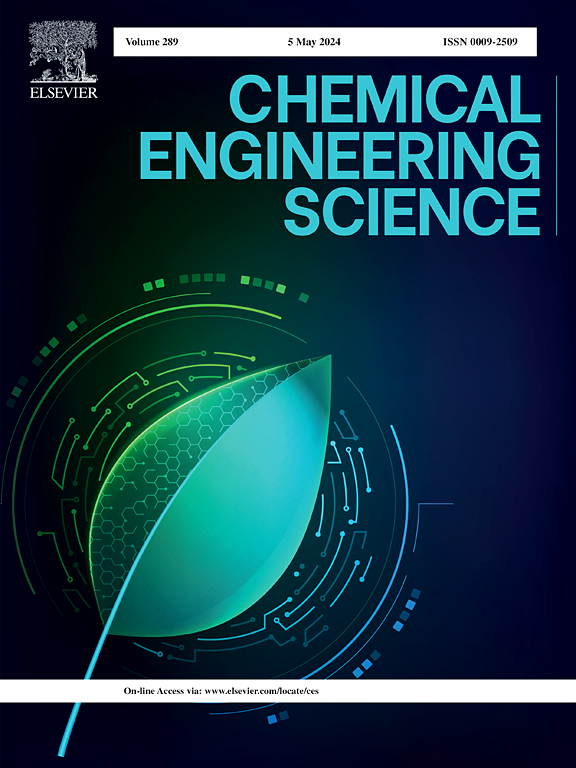基于混合算法的甲醇制丙烯固定床反应器多变量优化策略
IF 4.3
2区 工程技术
Q2 ENGINEERING, CHEMICAL
引用次数: 0
摘要
甲醇制丙烯(MTP)工艺作为丙烯生产的可行路线具有重要的前景。为了提高这一过程的效率,我们采用微观和宏观两步方法进行了全面的研究。首先,建立了适合工业六段固定床反应器的气固两相反应器模型。通过严格的灵敏度分析,我们研究了催化剂粒度对床层压降和产品分布的影响,最终确定了2.5-3.5 mm之间的最佳粒度范围。随后,我们开发了一种将随机算法与确定性算法无缝集成的混合优化算法。该方法的一个关键组成部分是利用有限元正交配置法(OCFE),该方法有效地将微分方程(DEs)转换为代数方程(ae),简化了优化过程。结果表明,甲醇通量提高4.75 %,丙烯选择性由65.34 %提高到73.98 %。本文章由计算机程序翻译,如有差异,请以英文原文为准。
A novel multivariable optimization strategy for methanol to propylene fixed bed reactors using a hybrid algorithm
The methanol-to-propylene (MTP) process holds significant promise as a viable route for propylene production. To enhance the efficiency of this process, we conducted a comprehensive study employing a two-step approach that integrates micro- and macro-level perspectives. Firstly, we established a gas–solid two-phase reactor model tailored for an industrial six-stage fixed-bed reactor. Through a rigorous sensitivity analysis, we investigated the impact of catalyst particle size on bed pressure drops and product distribution, ultimately identifying an optimal particle size range between 2.5–3.5 mm. Subsequently, we developed a hybrid optimization algorithm that seamlessly integrates a stochastic algorithm with a deterministic algorithm. A key component of our methodology was the utilization of the orthogonal collocation method on finite elements (OCFE), which effectively converted differential equations (DEs) into algebraic equations (AEs), simplifying the optimization process. The results show that methanol throughput increases by 4.75 %, and propylene selectivity increases from 65.34 % to 73.98 %.
求助全文
通过发布文献求助,成功后即可免费获取论文全文。
去求助
来源期刊

Chemical Engineering Science
工程技术-工程:化工
CiteScore
7.50
自引率
8.50%
发文量
1025
审稿时长
50 days
期刊介绍:
Chemical engineering enables the transformation of natural resources and energy into useful products for society. It draws on and applies natural sciences, mathematics and economics, and has developed fundamental engineering science that underpins the discipline.
Chemical Engineering Science (CES) has been publishing papers on the fundamentals of chemical engineering since 1951. CES is the platform where the most significant advances in the discipline have ever since been published. Chemical Engineering Science has accompanied and sustained chemical engineering through its development into the vibrant and broad scientific discipline it is today.
 求助内容:
求助内容: 应助结果提醒方式:
应助结果提醒方式:


